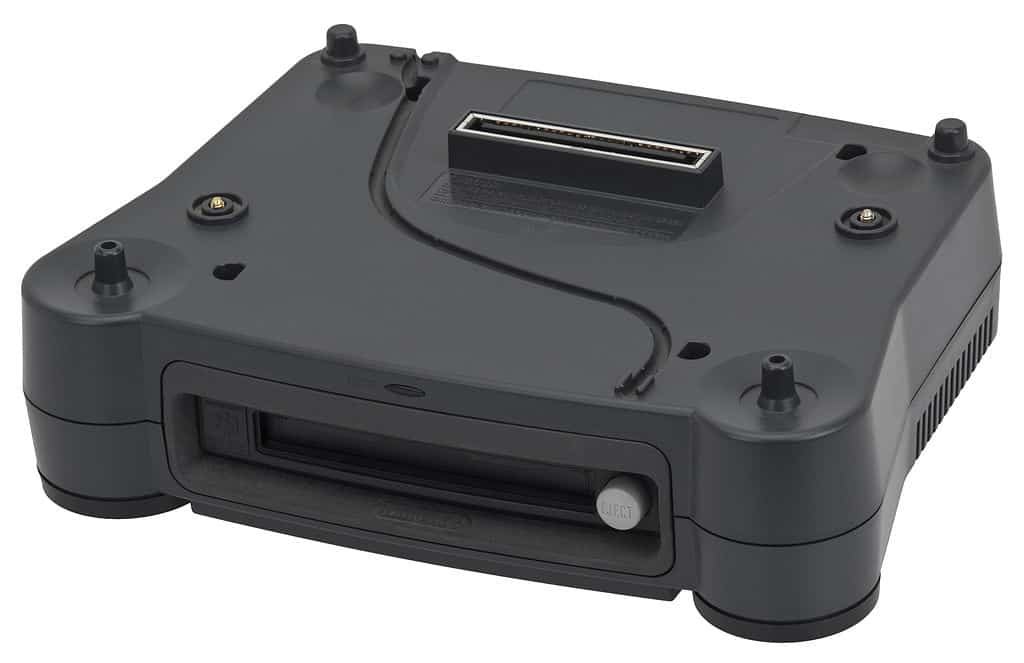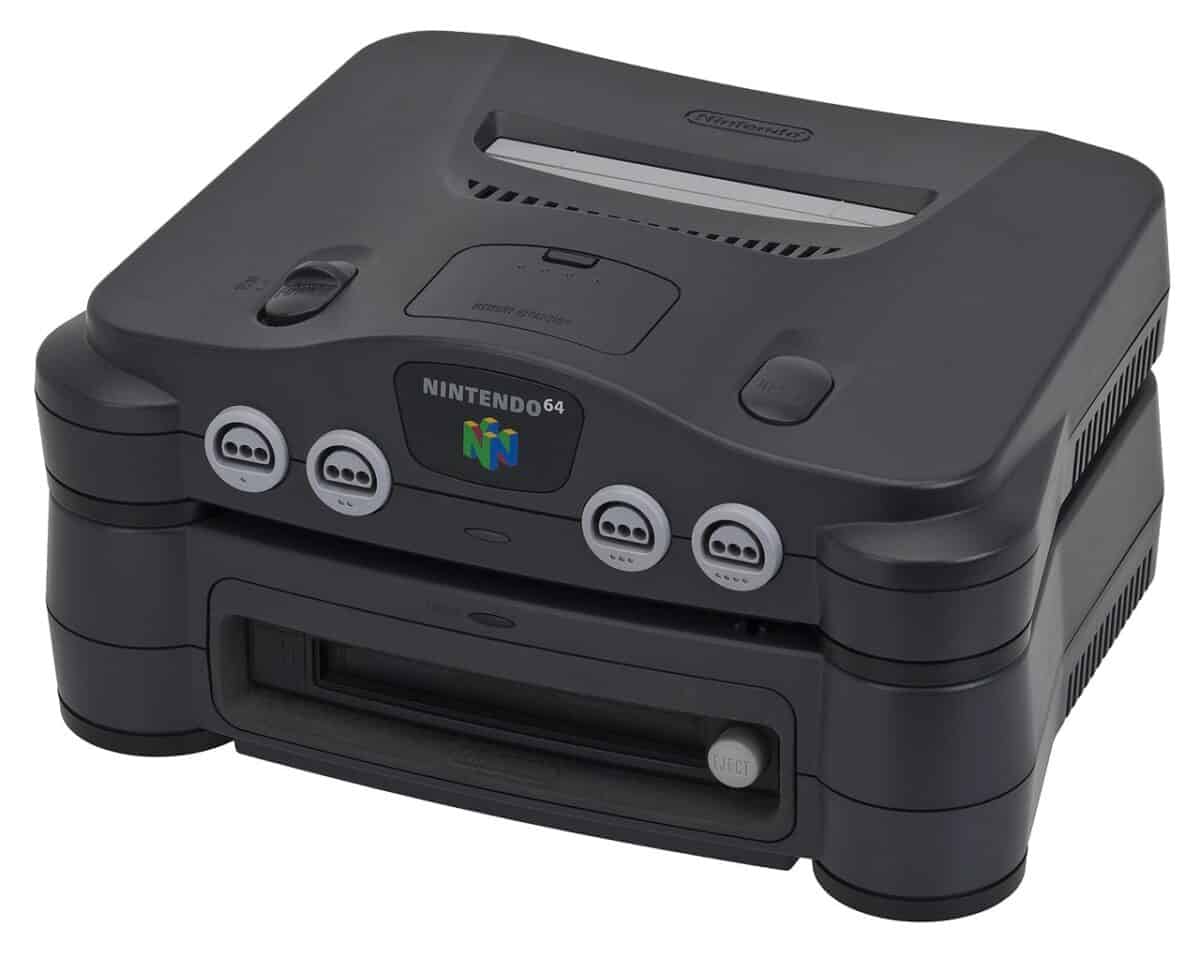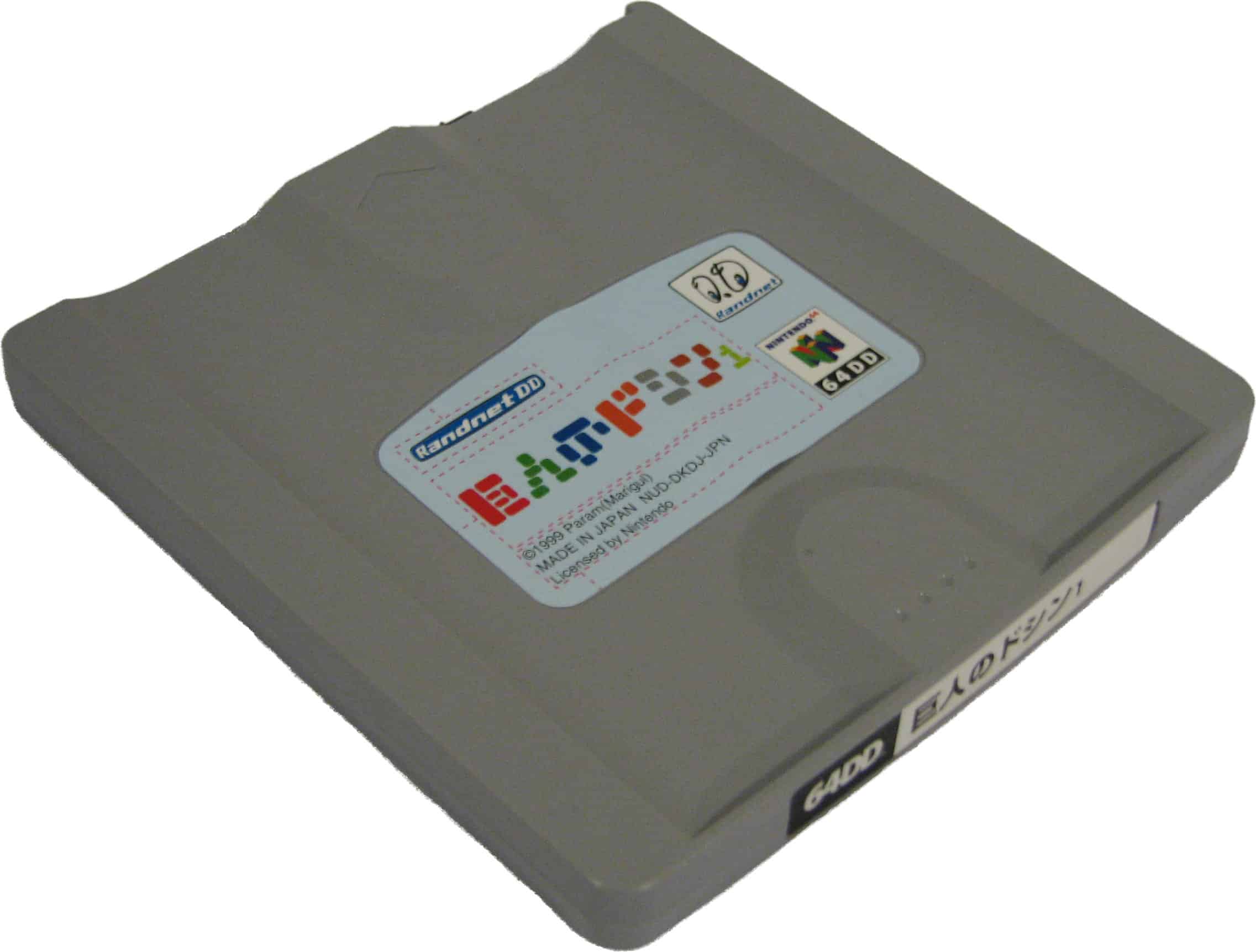The Nintendo 64 is a legendary console, but would you believe it was a commercial failure? Yes, the console that kick-started a lifelong love of gaming for many kids fell short of company expectations. Not only did the sales of the N64 suffer, but many developers who had called previous Nintendo consoles home jumped ship on the flashy new PlayStation console.
The history of Nintendo and Sony is well documented. The early 90s marked a shift in the entire gaming industry. CD-ROM was the in-thing, and established companies like Nintendo and Sega scrambled to keep up. Sega was the ill-fated peripherals Sega CD and 32X. For Nintendo, it was the Nintendo 64DD.
Quick Facts
- Release Date
- 01/12/1999
- Original price
- 2500 yen or $25 USD, $300 retail
- Units Sold
- 15,000
Those familiar with the 32X peripheral will understand that the comparison to the 64DD is not a compliment. The 64DD was a complete failure at every turn and pushed many fans and developers into the waiting arms of Sony. But what was the 64DD, what did it do, and why did it fail?
10 Facts about Nintendo 64DD
- Although it was originally slated for release in 1996 alongside the Nintendo64, the 64DD wasn’t released until 1999.
- The 64DD was Nintendo’s second attempt at disk-based games in Japan. The first was the Family Computer Disk System, released in 1986.
- Many of the games promised for the 64DD were eventually released as 64 Cartridge games.
- Many key developers jumped to Sony PlayStation during this time. The 64DD was, in part, an effort to bring them back.
- It is rumored that the creation and release of Legend of Zelda: Majora’s Mask with an Expansion Pack was due to the failure of the 64DD
- The 64DD peripheral only sold 15,000 copies over its lifetime
- The 64DD only had a total of 9 games, four of which were versions of Mario Artist
- Randnet was Nintendo’s first attempt at an Online service. It was shuttered in 2001
- The 64DD was never released anywhere outside of Japan
- It was rumored that Shigeru Miyamoto had developed an Ocarina of Time add-on for 64DD called Ura-Zelda with new levels, characters, and storylines. The rumor remains popular today.
Nintendo 64DD Specs

©Evan-Amos, CC BY-SA 3.0 <https://creativecommons.org/licenses/by-sa/3.0>, via Wikimedia Commons – Original / License
The 64DD, or Dynamic Disk, was designed to work as a peripheral for the Nintendo 64. It used rewritable magnetic disks instead of the more popular CD-ROM. CD-ROMs could house much more data and be cheaper to develop, but the early PlayStation and Sega Saturn games suffered from some issues. Mainly blockier polygons and “wobble,” which didn’t exist on the N64.
This may have led Nintendo to use magnetic disks for the N64 peripheral, but that would lead to issues we’ll cover later in the article. The disks could store 64 MB of data, a fraction of the 700 MB CD-ROMs were capable of but better than the 12-16 MB of cartridges.
The 64DD had lightning-fast load times because it could read disks at one MB/ sec. It also included the infamous expansion pack, which housed 4 MB of RDRAM. When placed in the N64 console, it would extend the ram to 8 MB in total.
Also worth mentioning is the modem that can with the 64DD package. It was shaped like a cartridge and slotted into the N64 console itself. I had an ethernet port so it could be hardwired for internet access. The service disk Randnet was then used to access Nintendo’s first online service of the same name.
The History of the Nintendo 64DD: What to know

©Evan-Amos, CC BY-SA 3.0 <https://creativecommons.org/licenses/by-sa/3.0>, via Wikimedia Commons – Original / License
The buzz around the 64DD was electric for a time. In 1993, after the announcement of the Sony PlayStation, all eyes were on Nintendo to enter the budding 3D games market. The NES and SNES had been smash hits, and fans were clamoring for the next thing.
Project Reality and the N64
Things entered a fever pitch in 1993 when it was announced that Nintendo had partnered with Silicon Graphics, Inc to develop a new console. The code name for this new development was project reality. Silicon Graphics was tasked with producing the development platform for new Nintendo games. This platform, called Onyx, was completed in 1995 and sold by Silicon Graphics for around $200,000.
In 1994, Nintendo announced the name of the new console as the Nintendo Ultra 64. It tapped some big-name developers, including Silicon Graphic and Rare, Ltd, to begin working on developing games for the new console.
Finally, the new console hit store shelves in 1996, three years after the initial announcement. By then, the Sony PlayStation had already gained ground in the 3D game market. In response to the success of the disk-based PlayStation, Nintendo announced the 64DD at the Shoshinkai game show, now known as Space World. Nintendo promised the add-on would bring powerful performance, incredible games, and even online play.
The 64DD Development
The 64DD was set to launch alongside the N64 in 1996, but as the year rolled around and the N64 hit store shelves, there was no 64DD in sight. The add-on was delayed several times as Nintendo had trouble making the technology meet expectations.
Nintendo had announced a massive list of incredible games fans could expect from the 64DD platform. Titles like Pokemon Snap, Super Mario RPG 2, Ultra Donkey Kong, and the highly anticipated Zelda 64 were all promised for the 64DD.
As the years dragged on, the 64DD continued to be delayed, and all those titles were eventually released in cartridge form on the N64. Ultra Donkey Kong became Donkey Kong 64, Super Mario RPG 2 became Paper Mario, and Zelda 64 became The Legend of Zelda: Ocarina of Time.
Finally, in 1999, the 64DD was released but not in stores. While it had a few sporadic retail releases, the 64DD was almost exclusively available as a mail-order subscription service. That’s right, nearly 17 years before Nintendo Switch Online, Nintendo released its first-ever online gaming subscription.
64DD Features: Games, Online, and Accessories
The subscription service costs $25 USD. But there was a lot of bang for your buck, and the sheer number of quirky gadgets and software included make it an interesting oddity of gaming history.
Hardware
Let’s start with the actual hardware included in the subscription. First, there was the 64DD itself. It was roughly the same size as the N64, just a little taller, and the base 64 console plugged into the top of the peripheral.
It also included a 4MB expansion pack, designed to expand the N64’s ram from 4MB to 8MB, a massive upgrade at the time. Some games included accessories that tied into the gameplay. There was a mouse and keyboard (the keyboard was sold separately on the Randnet store), a capture card, and a modem.
Games
Most of these accessories were designed for use with the 64DD’s “killer app” Mario Artist, a sequel to Mario Paint on the SNES. The game came in four versions:
- Paint – where you could draw two art using the N64 mouse
- Polygon – where you could create 3D character art
- Talent – where you could use the capture card or Gameboy Camera to capture your likeness and create in-game characters.
- Communication Kit – where you could take your creations and share them online.
There was also an F-Zero expansion kit which included more in-game content like new characters and tracks and a track creator feature. The 64DD even allowed for larger game worlds with the Sim City 64 and Nintendo original Doshin the Giant.
All these games and necessary accessories were included with the monthly subscription. There was also one more game included with this package, but in truth, it wasn’t a game at all.
Randnet, Nintendo’s First Online Gaming Service
Believe it or not, Nintendo Switch Online is the second time the company has had an online service, although the second time seems to be the charm. Randnet was an online service that was included with the 64DD subscription service.
To use Randnet, players had to hook up the modem in the cartridge slot, then pop in the “game” disk. This would bring a character creation screen where Randnet users could create avatars.
Once a member’s ID was validated and their character created, they could use Randnet for some things. some bought new accessories like the N64 keyboard online. Others downloaded new content for games using the store. There was also a chat feature where you could send emails and messages to other 64DD users.
So, while it was primitive, a lot of the ideas from Randnet can be seen in Nintendo’s online service today.
The public response
The 64DD was a quirky experiment that came out past its time. By the time 1999 rolled around, players were more interested in the next generation of consoles. The PS2 and the original Xbox were both on the horizon, and many fans had lost interest in the 64DD altogether.
Nintendo understood this. While the 64DD had some neat features, it wasn’t that interesting a package to players. That’s probably why Nintendo quietly released it in Japan only, then shuddered it a few years later.
This time marks a shift for Nintendo. After this, they would start to fall even farther behind in the new console wars. There was an exodus of developers during this time as well. Nintendo had ruled the 2D gaming market, but 3D had caught them flat-footed. Developers like Square moved to Sony, never to return save for a brief one-off.
Ultimately, the 64DD was a swing and a miss, but it paved the way for some great ideas. This seems to be Nintendo’s thing; this one didn’t work, but the next one will be better. At the end of the day, it is a cool oddity, and an interesting entry into the legacy of the house Mario built.
NEXT UP…
- The Real Reason HD DVD Failed Spectacularly
- The Real Reason Dreamcast Failed Spectacularly
- The Real Reason Blu-ray 3D Failed Spectacularly
The image featured at the top of this post is ©No machine-readable author provided. The Jedi~commonswiki assumed (based on copyright claims)., CC BY-SA 3.0







